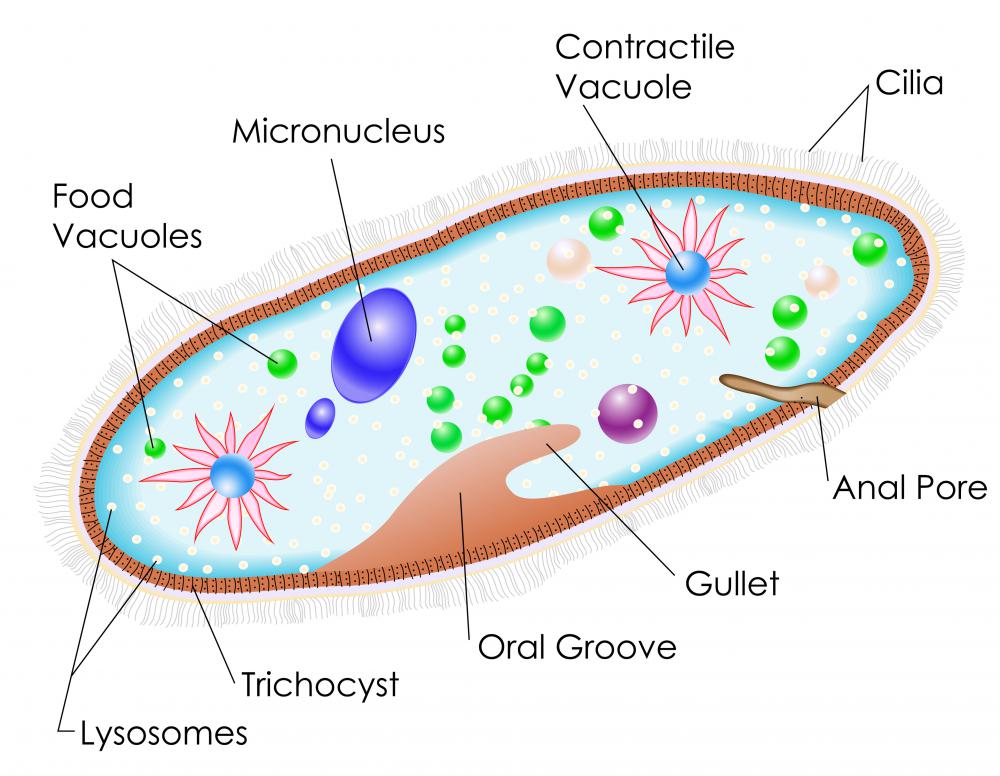At TheHealthBoard, we're committed to delivering accurate, trustworthy information. Our expert-authored content is rigorously fact-checked and sourced from credible authorities. Discover how we uphold the highest standards in providing you with reliable knowledge.
What are Some Organelles in the Cell?
Over billions of years of evolution, eukaryotic (complex) cells have developed many organelles, or subcomponents, which perform specialized tasks to increase the overall effectiveness or adaptability of the cell. The most obvious is the nucleus, within which is the nucleolus, the epicenter of the cell where the genetic material can be found. The nucleus protects the cell's genes from degeneration from various sources, such as invading viruses or energetic solar radiation. The nucleus is usually the largest of organelles in the cell, though it is sometimes second to large vacuoles.
The second most famous is probably the mitochondria. This is the only organelle that itself contains some genetic material, likely a vestige from an era when the mitochondria was an independent organism. It serves as the power plant for the cell, taking compounds like NADH and NADPH and converting them into energy in the form of ATP via oxidative phosphorylation. NADH and NADPH can be found floating around in the bloodstream, but must be converted to ATP for the cell's machinery to be able to use it. There are around 2,000 mitochondria in a typical eukaryotic cell, which take up about 20% of its total volume.

Another prominent subcomponent are the ribosomes, which are extremely important to the working of the cell. They are made up of 65% ribosomal RNA and 35% ribosomal proteins. The ribosomes, about 20 nm in diameter, are responsible for building all the proteins that make up the human body. The nucleolus of the cell sends out tiny molecules called messenger RNA to tell the ribosomes what to build. They then use transfer RNA to bring them amino acids, which they string together into the long polypeptides known as proteins. These smaller molecules floating in the intracellular medium are generally not considered organelles.

Other organelles, some only found in plants, include plastids (chroloplasts being the most famous), which conduct photosynthesis; the endoplasmic reticulum, which modifies new proteins and lipids; the Golgi apparatus, which sorts and modifies proteins; the vacuole, which mediates storage and homeostasis; and dozens more minor structures. All of these float in the soup of cytoplasm, the fluid that fills the cell. The structure of the cell is largely dictated by the cytoskeleton, which is made up of fibrous proteins.
AS FEATURED ON:
AS FEATURED ON:














Discuss this Article
Post your comments